It has been three years since we first met our daughter in a nondescript municipal building in China. While anniversaries like this bring adoption to the forefront of my mind, most days I don’t think about the different ways my kids arrived in our family. I pray for, feed, bathe, clothe, get frustrated with, hug, and love them both. But since our story isn’t the same as the majority of other families, I am taking a few minutes to share my experience parenting a child after international adoption.
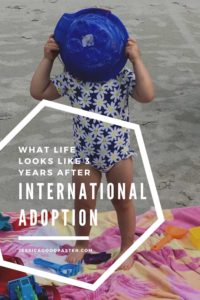
Pin me!
This post is a follow-up of sorts of my What to Expect in the First Year After International Adoption from a couple of years ago. Like that post, I have divided this one into two parts. I revisited some of the major areas of life and what they look like three years after adoption from China.
Are you considering adoption but concerned about the cost? Download a free copy of my 101 Adoption Fundraiser Ideas here.
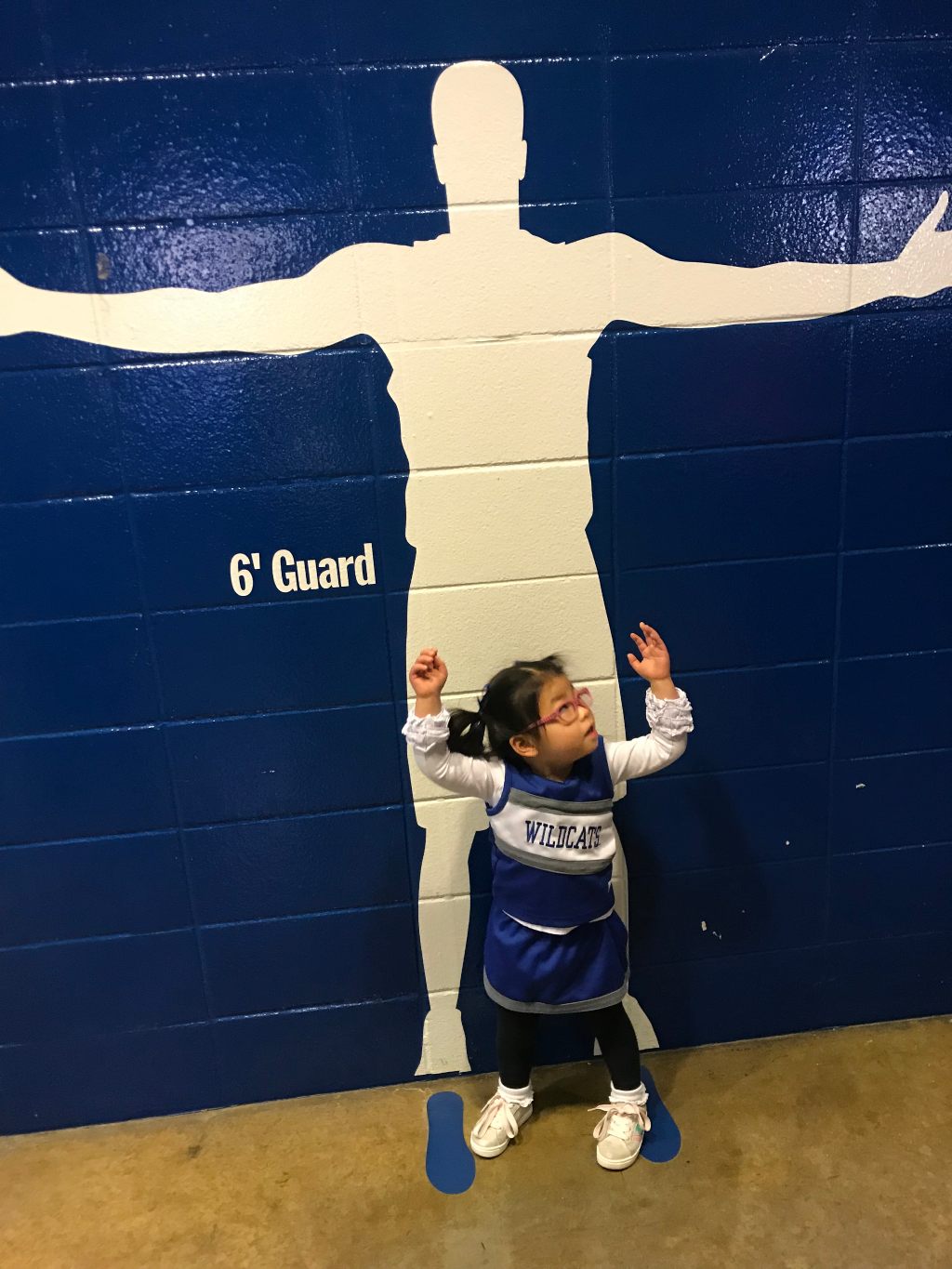
Our little cheerleader is growing, but isn’t quite as tall as a UK basketball player yet. She is currently projected to be less than 5 feet tall. Small but mighty!
Medical Needs After International Adoption
Since China is a special needs adoption program, potential families should anticipate some degree of medical treatment to be a part of daily life. Thankfully, my daughter’s beta thalassemia minor diagnosis results in little to no thought or attention. In fact, my husband almost forgot she had it until it came up in conversation recently.
If you are currently pursuing adoption from China, this should be treated as an exception rather than the rule. Even in the short time since we began the adoption process, the availability of young kids with mild-to-moderate special needs has decreased. I don’t say this to scare you, but to make sure that families are adequately prepared to care for the child they receive. It is also good news because it means that more children are being adopted in their home country. (Here’s a link to China adoption statistics in the US. You can see how the demographics the past few years are significantly different than the all years’ numbers. Or find more information on China’s waiting children here.)
No matter the prognosis, all children need a loving family to flourish and grow. But love doesn’t magically solve all problems, so be sure to do your due diligence to prepare for any medical needs. We researched thalassemia and what life looked like in a worst-case scenario. Thankfully, we were dismissed from the local pediatric hematology clinic after one visit. But I am glad that I knew about local professionals, insurance coverage, and treatment options in case they were needed.
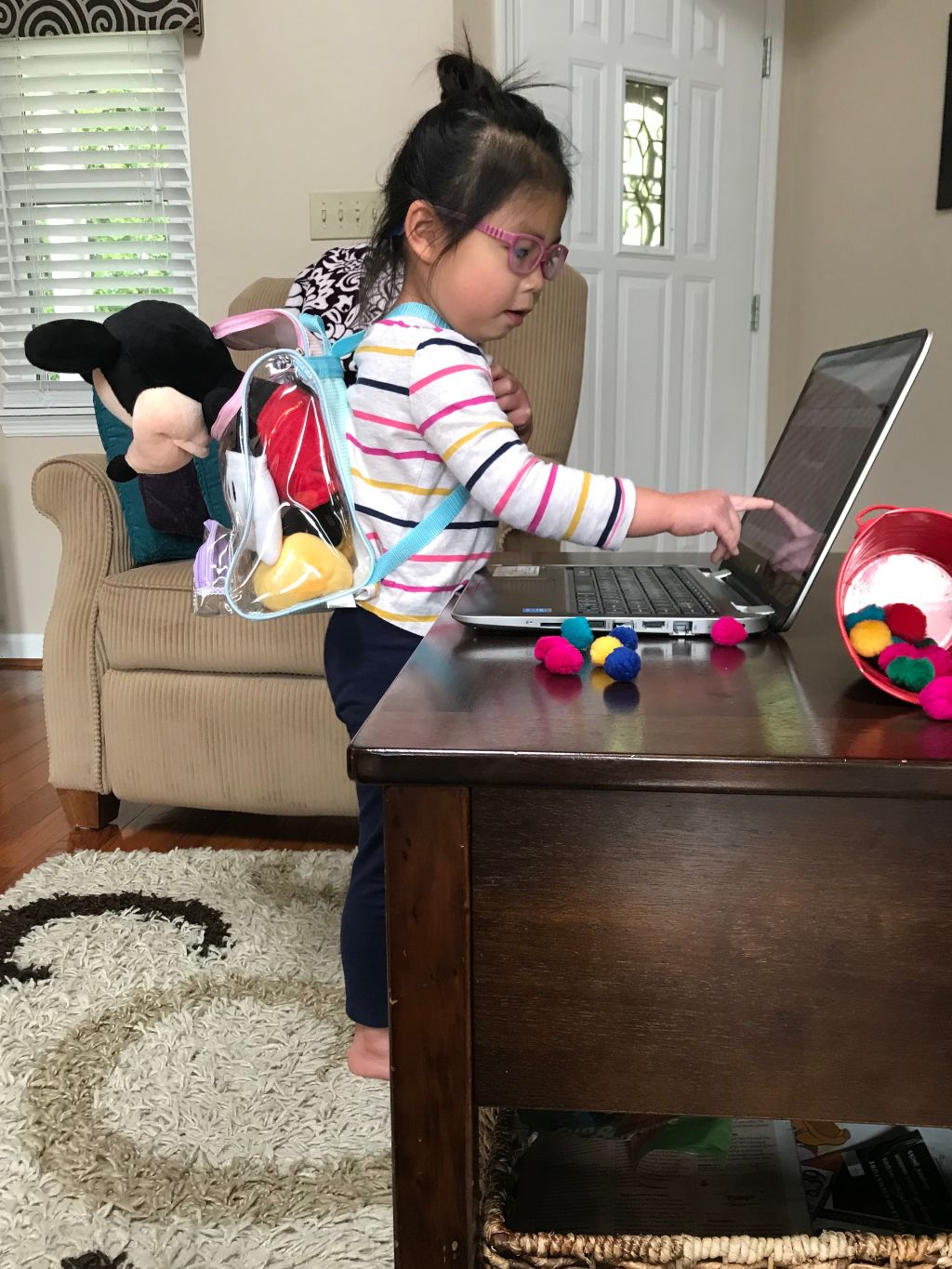
Doctor’s visits, speech, OT, PT, and school have all been done online thanks to COVID-19. But she does it in style!
Developmental Milestones
If you take nothing else from my story today, hear this: You will spend a significant portion of your time helping your internationally adopted child meet developmental milestones.
Our sweet L spent 18 months in an orphanage. I believe that the social welfare institutes in China do the best they can with the children in their care. But a loving staff and the best of conditions cannot replace the care and attention a child receives in a nurturing family environment. So we have spent the past three years working to overcome the delays likely caused by a less-than-ideal situation.
She has come so far! L’s understanding (receptive language) is on par with her peers. At last evaluation (though she’s due for another one this month), she also snuck into the “average” range on her expressive language. Basically, she can use sentences, has a varied vocabulary, and is beginning to use proper parts of speech. It is all super impressive to me considering she didn’t hear English for the first year and a half of life.
But the downside is that she is very difficult to understand, particularly for people who aren’t around her regularly. I’m thankful for weekly outpatient speech therapy visits (via telehealth now due to COVID-19) and for twice-weekly speech therapy on her individualized education plan (IEP) with the public preschool system.
These speech/language pathologists (SLP) give me homework to focus on her goals at home. I can’t tell you how many times we have prompted her to put the “long sound” at the end of words or made her repeat something to use the proper sound. It is a focused effort that we will be in for the long haul.
I get such joy from hearing her tell me about something she did earlier in the day. It is literal music to my ears when she sings sweet songs in the backseat of the car. Even arguing with her brother is a cause for celebration when we understand why she’s annoyed. Those are hard-fought words that she (and we!) have worked hard to learn.
I don’t know a single family who has adopted from China and not needed speech therapy (they may be out there, but I don’t know them). Be sure to know what is covered under your insurance and what options are available in your community before adopting. You may even want to start saving for copays because odds are that you’ll need them!
In addition to speech therapy, L also has both occupational (OT) and physical therapists (PT) on her IEP and through the outpatient clinic. We’re still working through some gross and fine motor delays as well as sensory processing and regulation issues.
If you are keeping track, that is six different therapists that I try my best to keep up with. They have all taught me things that make me a more intentional parent in my interactions with L. Most importantly, she has made tons of progress.
One of the most fascinating things I’ve learned from her OT is reflex integrations. (I’m not going to attempt to explain it, but if you are interested, you can read more about the Musgutova Neurosensorimotor Reflex Integration method here.) Basically, we do some relatively simple exercises with L that help her properly integrate reflexes that most people do as an infant. Though I don’t fully understand it, I can tell a difference in her behavior when I forget to do them for a week.
In general, L’s tantrums, head banging, and other more challenging behaviors have drastically improved. And I am thrilled to announce that our girl is finally potty trained! (We still have occasional accidents at night, but you can check out my Peejamas review for one solution to that.)
When I see her around other four year olds, she appears younger than most (especially since she’s so petite!). I feel in most areas she is closer developmentally to the amount of time she’s been home than to her chronological age. Regardless, I am so very proud of the huge strides she has made and can’t wait to see what she conquers next.
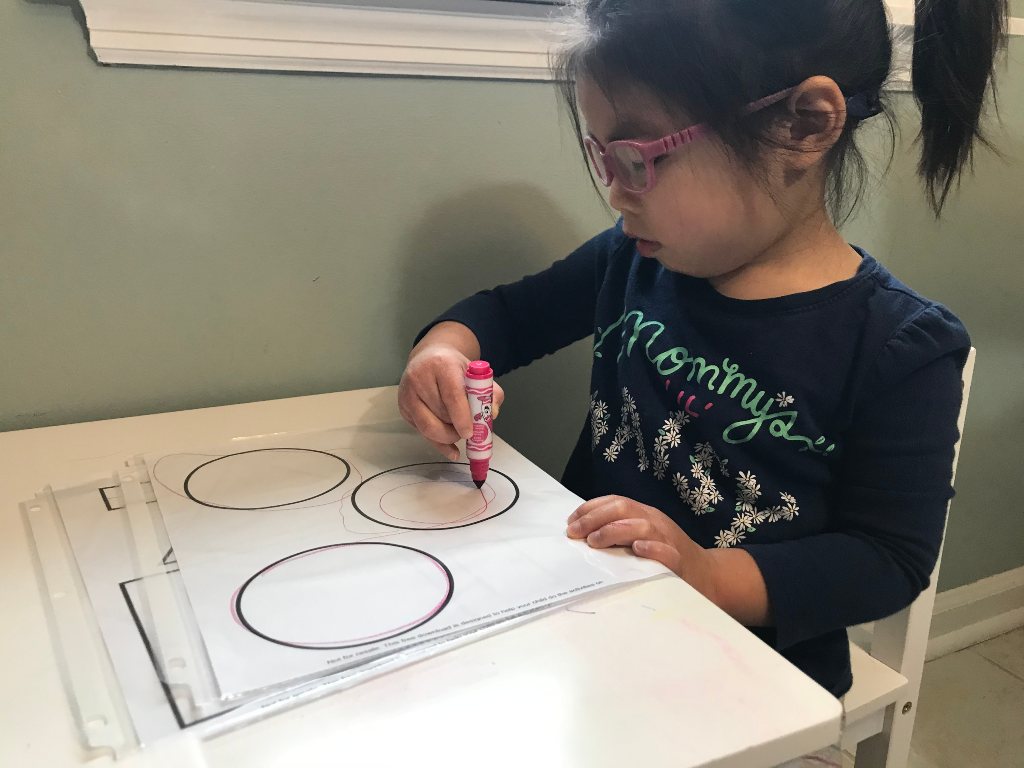
One of the activities she works on with her OT is pre-writing lines. This helps with fine motor skills, commonly behind in kids who were adopted internationally.
School and Education Post International Adoption
After making the surprising decision to quit my job shortly after L came home, we had the option of how we wanted to deal with preschool rather than being forced to continue with daycare. For the 2018-2019 school year, we found this awesome program called Chatterbox at a local hearing and speech center that was designed by an SLP to spur language in a small group setting.
L went three mornings per week for three hours each time with a few other kids. I was nervous that she would have a difficult time with separation anxiety, but I asked if I could bring her a few times before class started to play in the room and meet the teacher. I took a few photos of the room and staff to show her when talking about “school.”
She transitioned beautifully and absolutely loved going. It was a great precursor to preschool where she got to practice circle time, play centers, walking in a line, and taking direction from teachers. Plus, they focused on speech and language activities to encourage her to be more verbal.
In Kentucky, when you “graduate” from the First Steps early intervention program, they automatically set you up for evaluations and placement in public preschool. Though we had the option to transition there after her third birthday in February 2019, we opted to keep her in Chatterbox for the remainder of the school year. But we did do everything to get her IEP in place and ready to go for the next school year. Sometimes school districts will label kids as “English-language learners” after international adoption, thus delaying speech services. We are thankful this was not the case for us.
In August 2019, L started at preschool through our local school system specifically designed for kids who need some extra help in certain areas. This program is three hours per day, five days per week. We only got to see the room and meet the teachers once prior to the first day, but she had no issues with going to a new place.
She made friends and we saw huge increases in language and independence as the year went on. L even cried on days that school wasn’t in session! It was obvious she thrived in the school setting and we were really happy with the progress she made towards her goals. But, alas, we all know how the 2019-2020 school year ended.
Me doing nontraditional instruction (NTI) packets for preschool, with additional activities to meet her IEP goals, while also attempting to follow the school therapists’ instructions at home was definitely less than ideal. Plus, all of our outpatient therapies switched to telehealth. Did I mention that I also have another kid doing NTI while both my husband and I try to work from home during a global pandemic? (Don’t miss my post on why quarantine is difficult for adoptive and special needs parents.)
I consider making it through the day a success at this point, but I have been pleasantly surprised by how well L adjusted to the massive changes. Both she and her brother have rolled with everything much better than expected (and better than me at some points!). It does appear that school for our kids will be online for the first semester, so I’m really hoping that we don’t lose the momentum we had gained with preschool. But I prioritize health over in-person classes, so we will make the best of it!
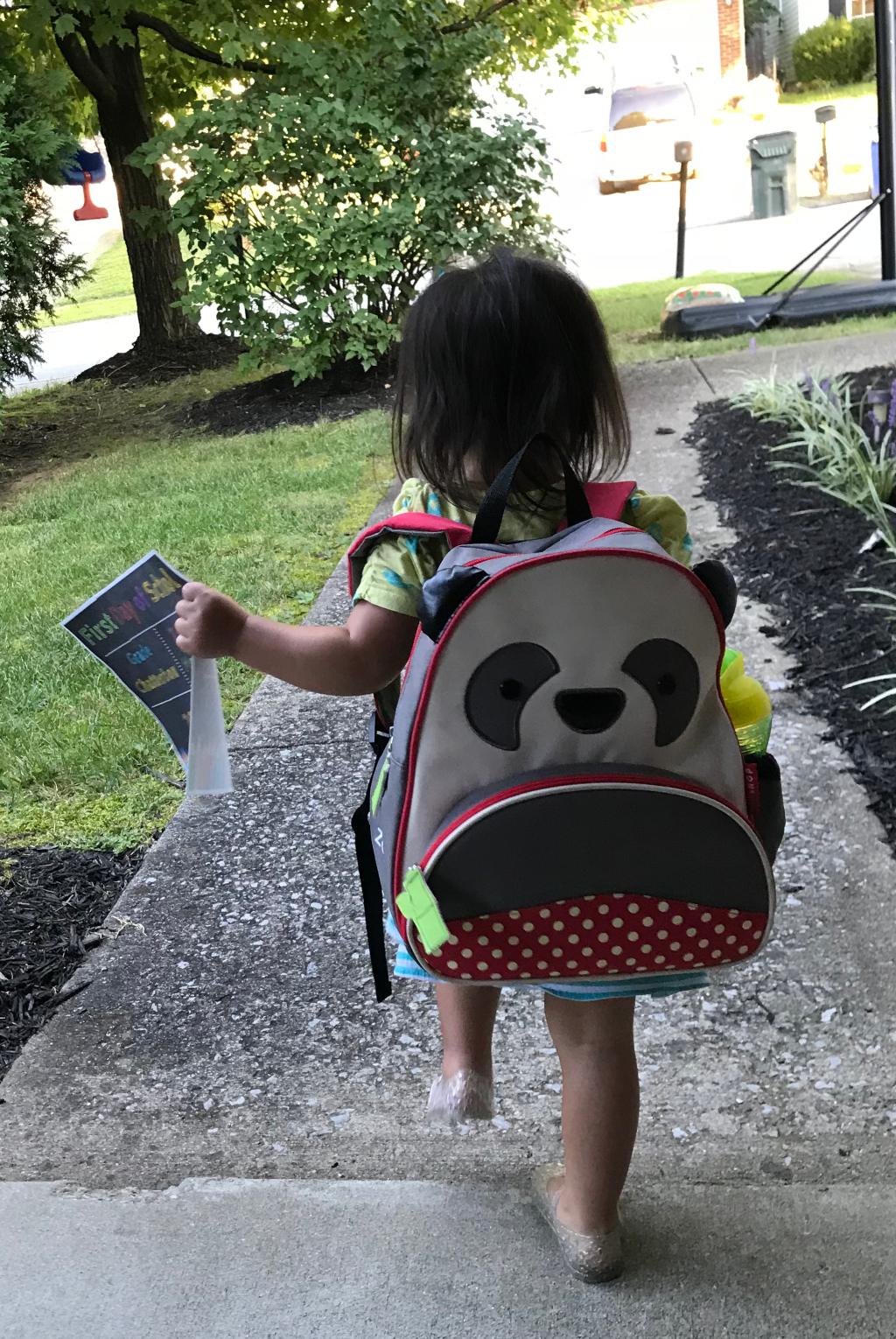
L is rocking her panda backpack for the first day of preschool.
Part 2 Coming Soon!
Stay tuned for the second part of this series soon! I’ll discuss the ways international adoption affects parenting in the areas of food and drink, attachment and trauma, life and family, and faith.
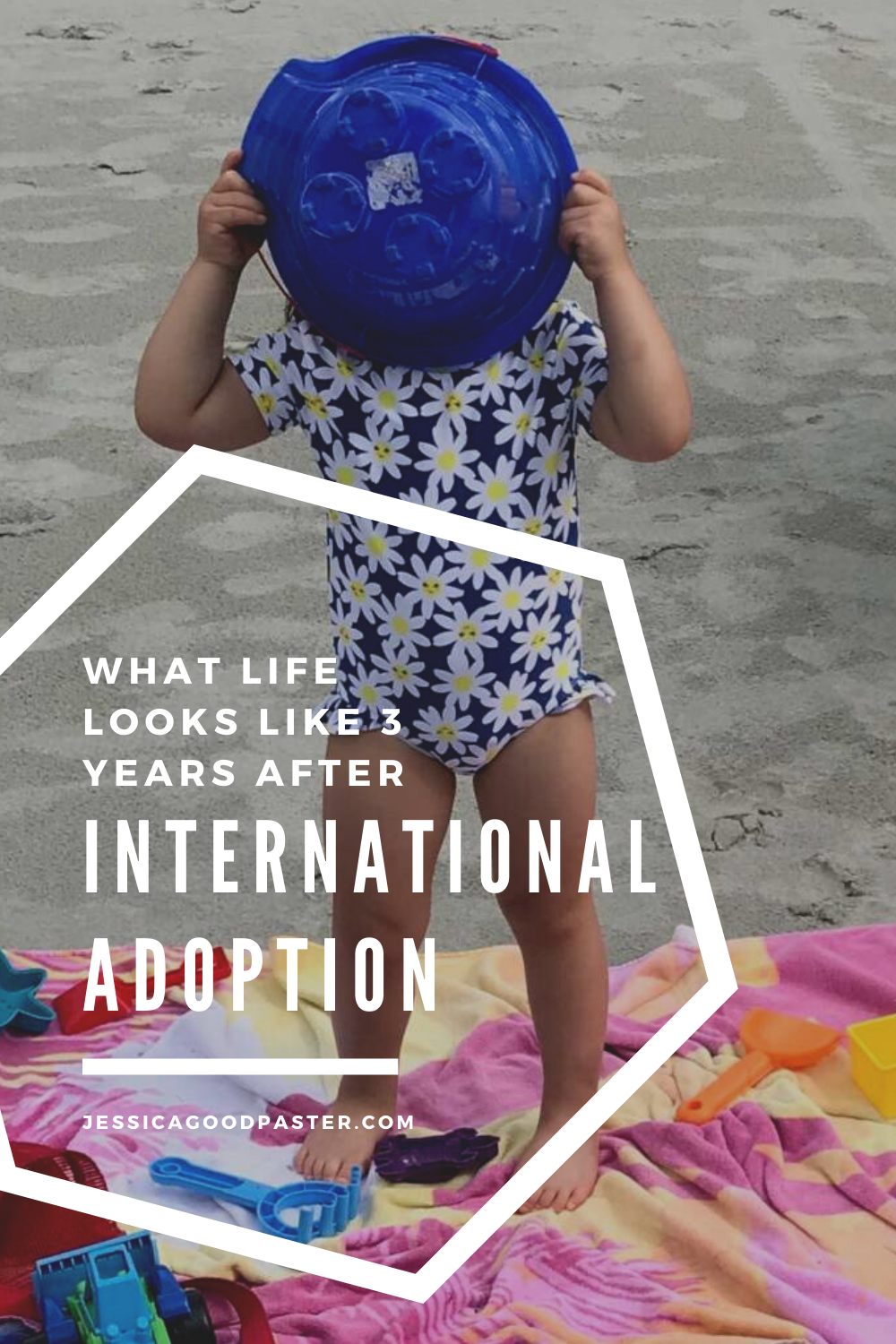

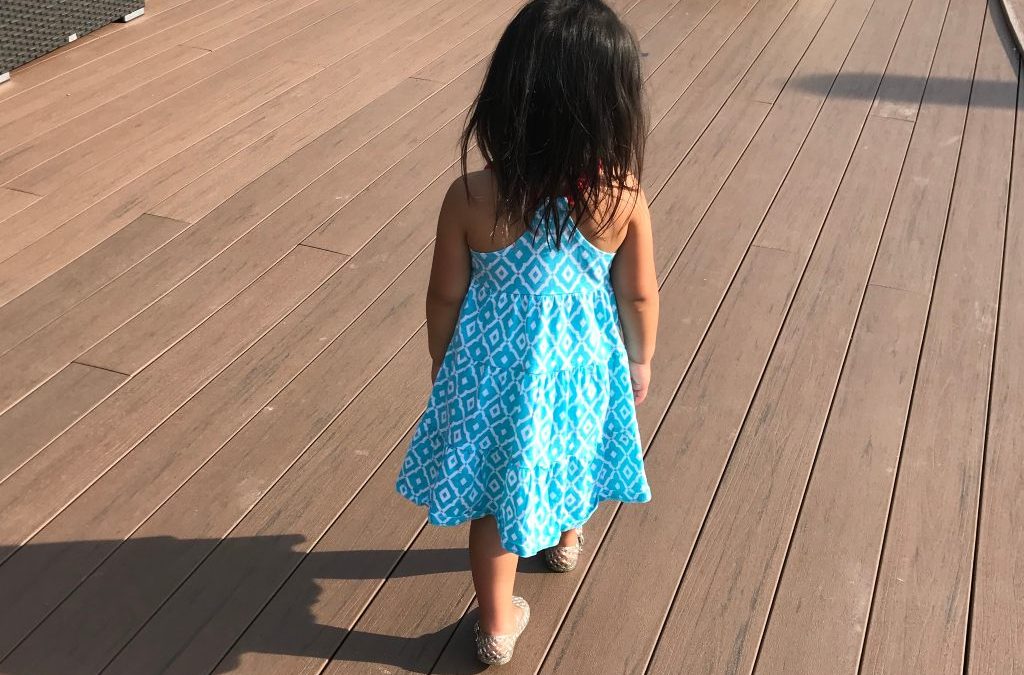
 Hi! I'm Jessica! I help people fund adoptions, navigate parenting, save money, and enjoy the good things in life.
Hi! I'm Jessica! I help people fund adoptions, navigate parenting, save money, and enjoy the good things in life. 
Wonderful! Thank you for sharing your story, Jessica. My brother and sister in law adopted two special needs children from Ukraine about a year ago. It was a long road but so, so worth it.
Thanks for reading! I’m sure your niece/nephews are such a blessing to your extended family!